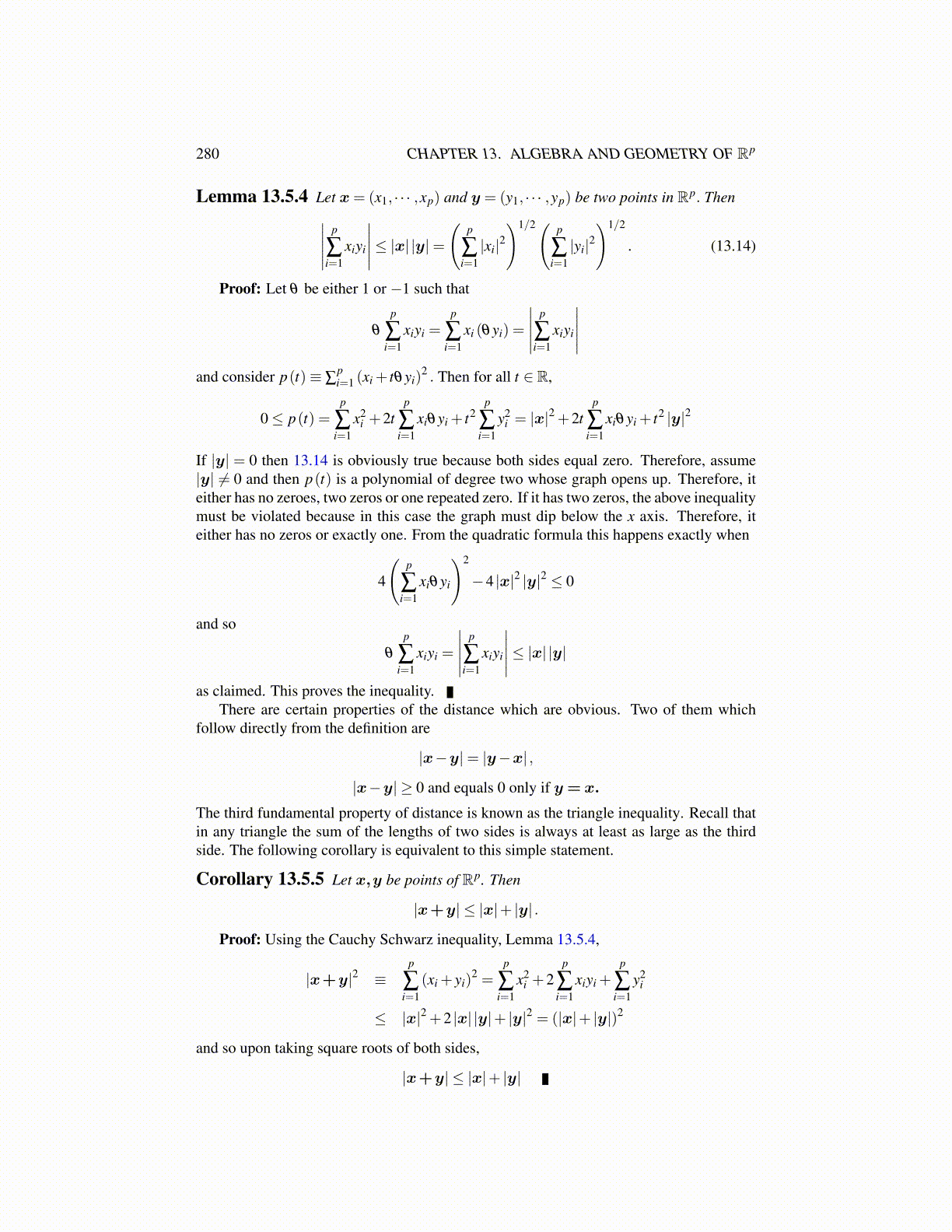
280 CHAPTER 13. ALGEBRA AND GEOMETRY OF Rp
Lemma 13.5.4 Let x= (x1, · · · ,xp) and y = (y1, · · · ,yp) be two points in Rp. Then∣∣∣∣∣ p
∑i=1
xiyi
∣∣∣∣∣≤ |x| |y|=
(p
∑i=1
|xi|2)1/2( p
∑i=1
|yi|2)1/2
. (13.14)
Proof: Let θ be either 1 or −1 such that
θ
p
∑i=1
xiyi =p
∑i=1
xi (θyi) =
∣∣∣∣∣ p
∑i=1
xiyi
∣∣∣∣∣and consider p(t)≡ ∑
pi=1 (xi + tθyi)
2 . Then for all t ∈ R,
0 ≤ p(t) =p
∑i=1
x2i +2t
p
∑i=1
xiθyi + t2p
∑i=1
y2i = |x|2 +2t
p
∑i=1
xiθyi + t2 |y|2
If |y| = 0 then 13.14 is obviously true because both sides equal zero. Therefore, assume|y| ̸= 0 and then p(t) is a polynomial of degree two whose graph opens up. Therefore, iteither has no zeroes, two zeros or one repeated zero. If it has two zeros, the above inequalitymust be violated because in this case the graph must dip below the x axis. Therefore, iteither has no zeros or exactly one. From the quadratic formula this happens exactly when
4
(p
∑i=1
xiθyi
)2
−4 |x|2 |y|2 ≤ 0
and so
θ
p
∑i=1
xiyi =
∣∣∣∣∣ p
∑i=1
xiyi
∣∣∣∣∣≤ |x| |y|
as claimed. This proves the inequality.There are certain properties of the distance which are obvious. Two of them which
follow directly from the definition are
|x−y|= |y−x| ,
|x−y| ≥ 0 and equals 0 only if y = x.
The third fundamental property of distance is known as the triangle inequality. Recall thatin any triangle the sum of the lengths of two sides is always at least as large as the thirdside. The following corollary is equivalent to this simple statement.
Corollary 13.5.5 Let x,y be points of Rp. Then
|x+y| ≤ |x|+ |y| .
Proof: Using the Cauchy Schwarz inequality, Lemma 13.5.4,
|x+y|2 ≡p
∑i=1
(xi + yi)2 =
p
∑i=1
x2i +2
p
∑i=1
xiyi +p
∑i=1
y2i
≤ |x|2 +2 |x| |y|+ |y|2 = (|x|+ |y|)2
and so upon taking square roots of both sides,
|x+y| ≤ |x|+ |y|